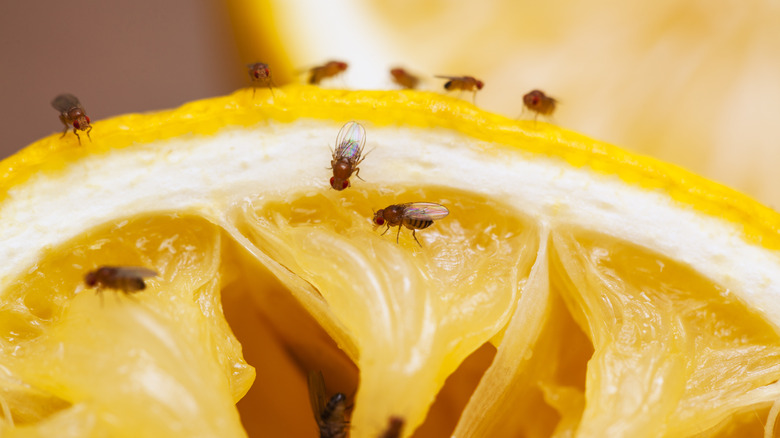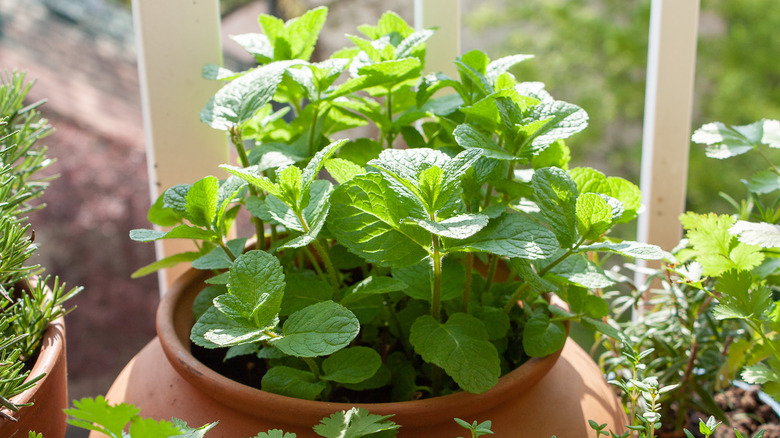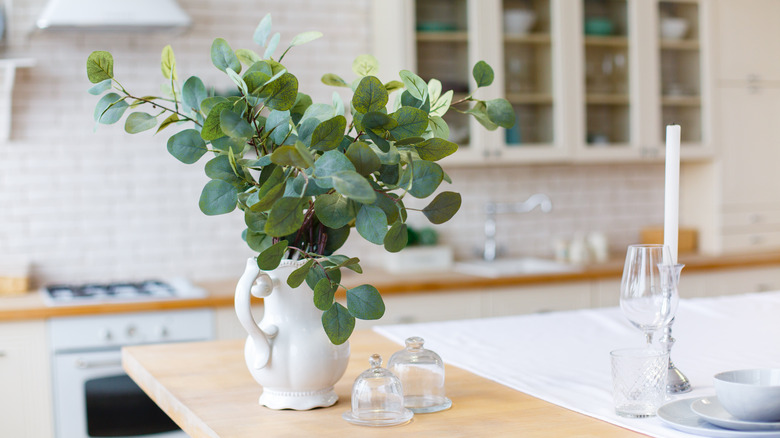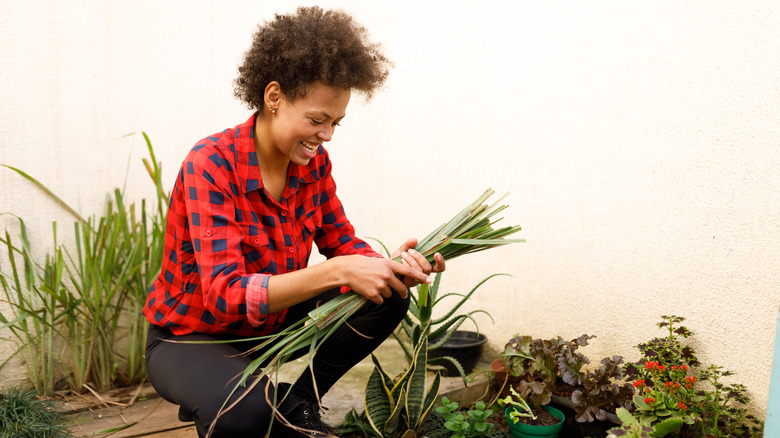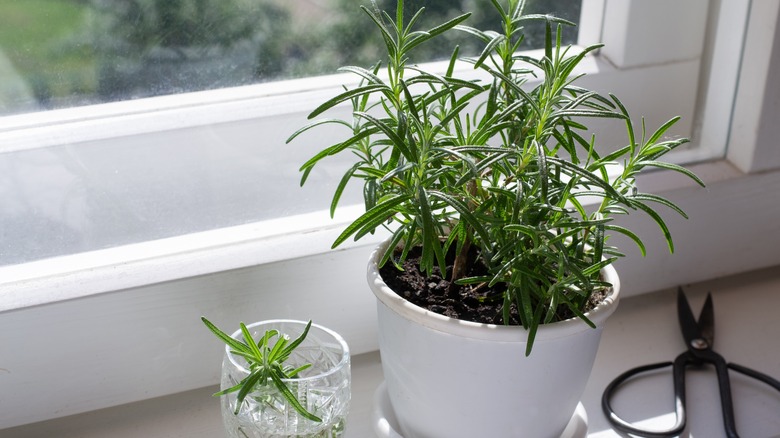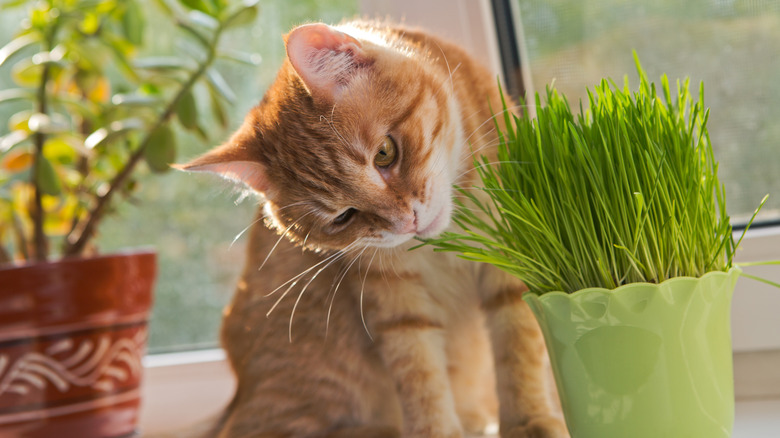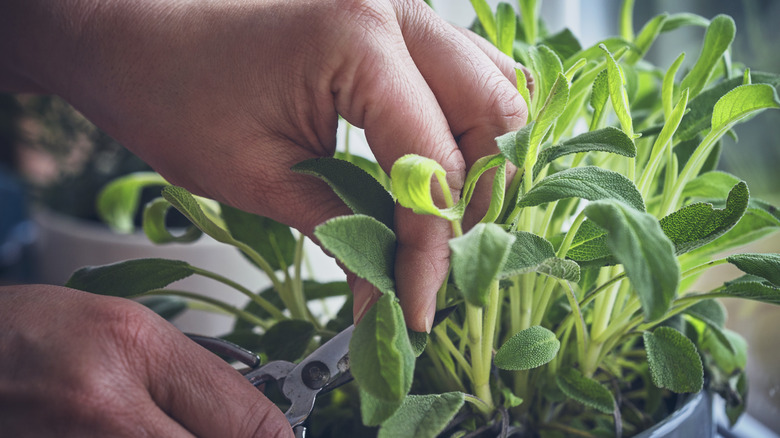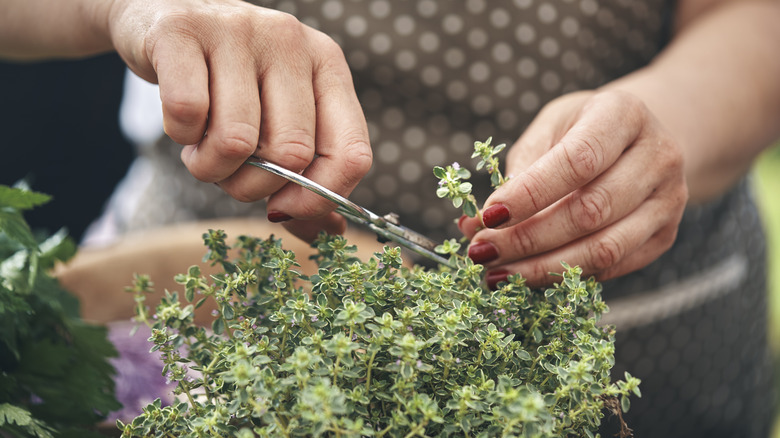Repel Fruit Flies From Your Home With 9 Plants They Cannot Stand
There are few visitors as pesky as a fruit fly. They linger around the kitchen stealing bites of your produce. Anyone who has dealt with fruit flies knows how quickly they can become a problem. That's because they lay up to five hundred eggs in their short lifespan. Then, those eggs hatch within a week and further crowd your kitchen. So, driving and keeping the pests away is the best way to stop an infestation before it starts. You can repel fruit flies from your home by planting some of the plants flies hate.
There are many species of plants that fruit flies cannot stand. Flies, like humans, are attracted to some smells, but they detest others. Natural chemicals like linalool are too intense for flies and lucky for you, it's found in many plants. We've put together a helpful list of fly-repelling plants that you can use in the home or just outside of it. Many of these species are perfect for kitchen window sill growing. Once you know what you can plant, you can then figure out what will grow best in your kitchen.
Lavender
Lavender (Lavendula angustifolia) is an herb with linalool, so while humans adore it, fly species hate it. Though it's often seen as a large bush, lavender is easily grown indoors. Place it on a kitchen window sill where its fragrance will deter fruit flies that may otherwise enter through small openings. Lavender will grow best against a south-facing window.
Sunlight needs: Full sun
Water needs: Water every two weeks until you see blooms, then water every 3 to 4 weeks
Peppermint
If fruit flies are giving you trouble, growing peppermint (Mentha piperita) is a great solution with additional benefits. Mint repels flies who are put off by its strong aroma. It's best potted alone and kept on a window sill. Avoid planting it in a garden, as it can quickly become an invasive nuisance. Peppermint also carries culinary and medicinal properties.
Sunlight needs: Full sun
Water needs: Water every 1 to 2 weeks or when the soil is dry
Eucalyptus
Eucalyptus (Eucalyptus spp.) may not grow indoors, but its branches work just as well. It is an evergreen tree well-known for its strong, fresh scent. You can grow a smaller ornamental tree near a window or you can periodically trim branches and place them in a vase. Because the branches won't need the same light requirements as a live plant, you can put them wherever you see the most flies.
Sunlight needs: Full sun
Water needs: Let topsoil dry in between waterings
Lemongrass
There are over fifty species of lemongrass (Cymbopogon spp.) and fruit flies can't stand the scent of any of them. They dislike it so much that lemongrass oil is a popular ingredient in many natural pest sprays. You can grow the tropical lemongrass plant from seed — if you follow the right steps, or plant a stalk you purchased from the grocery store.
Sunlight needs: Full sun
Water needs: Water weekly with an inch of water
Basil
Basil (Ocimum basilicum) is one of the most popular choices for an indoor herb garden. It's easy to grow, and its leaves are a delicious addition to many dishes. It also happens to repel fruit flies. The warm, earthy scent of basil is enough to deter flies from nearby areas. That's why you should have this herb in your kitchen all summer long.
Sunlight needs: Full sun
Water needs: Water weekly with an inch of water
Rosemary
Another popular herb, rosemary (Salvia rosmarinus), can deter flies. The same fragrant oils that enhance Italian cuisine will also smell uninviting to the tiny invaders. It's best grown on a window sill that receives plenty of sun. Though you can start the herb from seeds, rosemary is often sold as a young plant. So, you can begin enjoying its benefits as soon as you take it home.
Sunlight needs: Full sun
Water needs: Weekly so long as the soil is dry
Catnip
Every feline's favorite herb, catnip (Nepeta cataria), is another fruit fly repeller. It is a member of the mint family — which gives it a familiar scent – and can be grown indoors in a container as a houseplant. In a compact container, catnip grows fast, and even faster when placed on a window sill that gets direct sunlight.
Sunlight needs: Full sun, tolerates partial shade
Water needs: Weekly if the soil is dry
Sage
Garden sage (Salvia officinalis) is a beginner-friendly culinary herb that you can grow to repel fruit flies. The chemical that sends them away is called borneol, and it is often added to natural pest repellants. Grow sage on a window sill that receives direct sunlight for most of the day and pot it in well-draining rocky soil.
Sunlight needs: Full sun or partial shade
Water needs: Up to twice a week for young plants, every 1 to 2 weeks for mature plants
Thyme
Thyme plants (Thymus vulgaris) also contain the pest-deterring chemical borneol. It can be grown alongside herbs like sage and rosemary for a triple threat of natural scent. The small-leaf herb grows best on a window sill in direct sunlight. It's a highly adaptable plant, but it's important to let its potting soil dry completely between waterings to avoid root rot and similar issues.
Sunlight needs: Full sun
Water needs: Water about every two weeks
